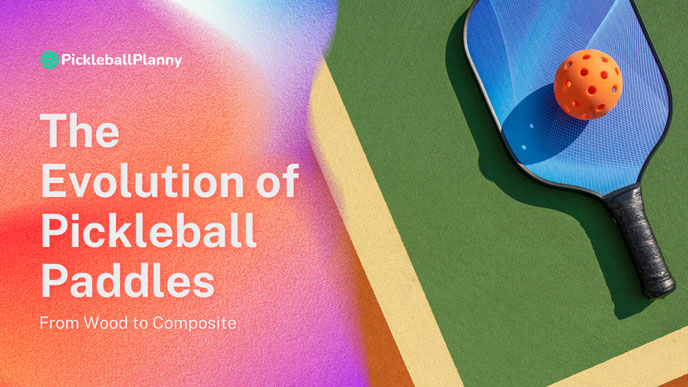In the ever-evolving world of sports equipment, pickleball paddles have undergone a remarkable transformation. From humble beginnings with wooden paddles, the game of pickleball has leaped into the future with advanced composite materials. This article embarks on a journey through time, tracing the evolution of pickleball paddles, exploring the pivotal role of technology, and understanding how these innovations have impacted the sport. Let’s delve into the fascinating history and the science behind pickleball paddle evolution.
The Pioneering days of Pickleball
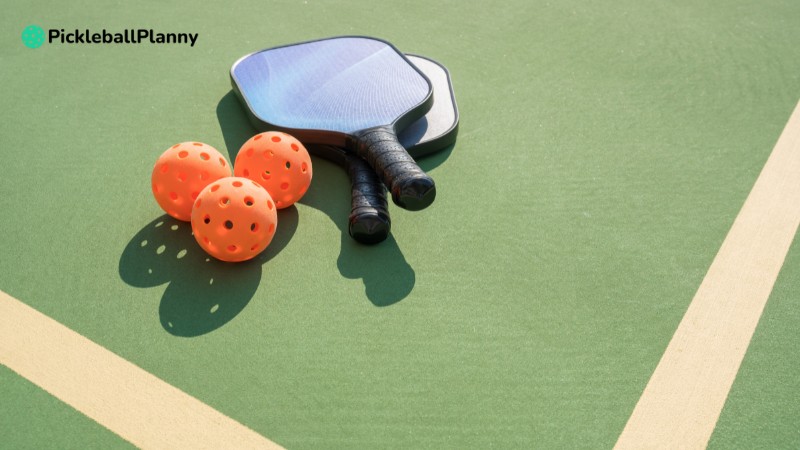
Pickleball, a sport born in the mid-1960s, started with the simplest of equipment—wooden paddles. Players took to the courts with wooden rectangles featuring minimal technology. These early paddles were straightforward, with basic construction and limited design variations.
While there are some events that incorporate pickleball into celebrations of pioneer days, like the Gila Valley Pioneer Days with a pickleball tournament, the sport itself has a much more recent origin story.
Wooden paddles served the initial purpose, but as the sport gained popularity, players began to experiment with designs and materials. The desire for more control, power, and finesse drove the first major shift in paddle evolution.
Wood to Polymer: The First Shift
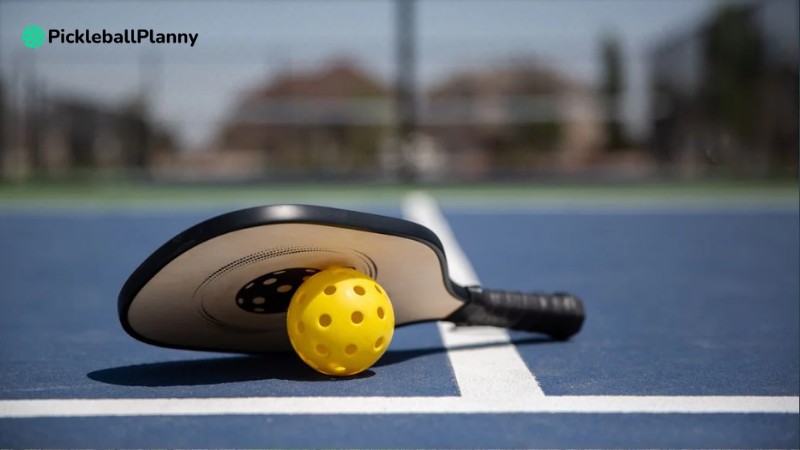
The shift from wood to polymer paddles marked a pivotal moment in pickleball history. Polymer, a lightweight and durable material, opened up new possibilities. These paddles provided better ball control and improved maneuverability.
Polymer paddles offered several advantages, including resistance to the elements and a wider range of design options. These paddles incorporated a honeycomb core, which enhanced the balance between power and control, making them popular among players seeking a more dynamic experience.
The transition to polymer paddles also significantly impacted the competitive aspect of the sport, making it more accessible to a broader range of players.
Read more article about: Pickleball for Seniors: Why It’s the Perfect Sport
The Rise of Composite Materials
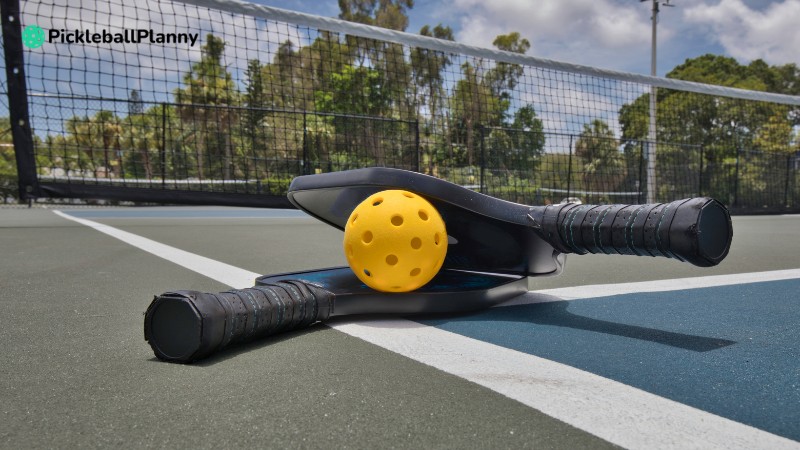
The real game-changer in pickleball paddle evolution was the adoption of composite materials. Composites, typically a blend of fiberglass, carbon fiber, and other cutting-edge materials, revolutionized paddle construction. The resulting paddles boasted remarkable characteristics:
- Lightweight: Composites offered a lighter alternative to wood and polymer, reducing fatigue during play.
- Strength: The combination of materials makes composite paddles remarkably strong and durable, ensuring a longer lifespan.
- Control: The flexibility of composites allowed for the fine-tuning of control and precision.
Fiberglass and carbon fiber became synonymous with modern paddle design. These materials were strategically layered to optimize strength, balance, and performance.
Modern Paddle Design and Technology

The evolution of pickleball paddles didn’t stop with composite materials. Modern paddle design integrates sophisticated technology to enhance player experience:
- Honeycomb Cores: Honeycomb core paddles remain popular for their optimal balance between power and control. This core design allows for an enhanced ball feel.
- Textured Surfaces: Paddle surfaces are now textured to improve spin control, adding a new dimension to the game.
- Edge Guards: Edge guards protect paddles from damage during intense play, extending the life of the paddle.
These technological advances cater to the diverse needs of players, from beginners to seasoned professionals.
The Quest for Power and Control
The evolution of pickleball paddles is an ongoing quest to find the perfect balance between power and control. Paddle manufacturers recognize that players have varying preferences, and the market now offers a wide range of options, including:
- Power Paddles: Designed to provide a little extra “oomph” behind each shot, power paddles appeal to those who prefer an aggressive playstyle.
- Control Paddles: Focused on precision and finesse, control paddles are suited for players who value placement and strategy.
- Hybrid Paddles: These paddles aim to strike a balance between power and control, appealing to a broad range of players.
The ability to select a paddle tailored to individual playing styles is a testament to the versatility of modern pickleball paddle design.
Regulatory Standards and Certification
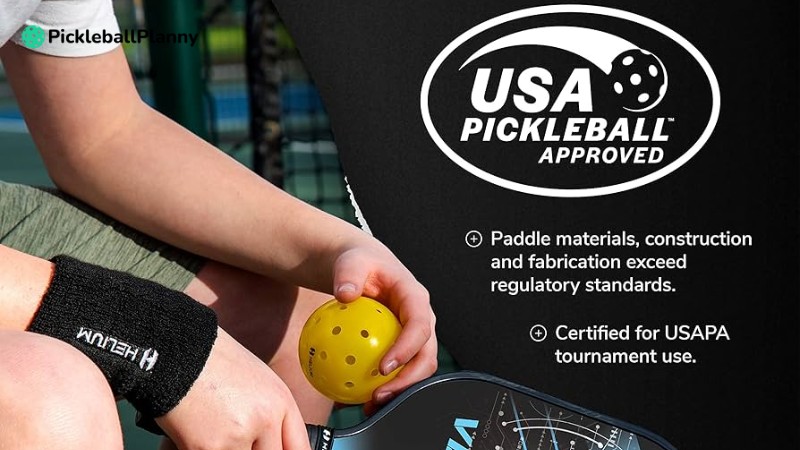
Pickleball’s rapid growth necessitated the establishment of regulatory standards and certifications. Organizations like the USA Pickleball Association (USAPA) play a crucial role in setting these standards. Paddles must adhere to specific criteria to be approved for competitive play.
USAPA-approved paddles meet size, weight, and material requirements. This ensures a level playing field and fair competition. Manufacturers must undergo rigorous testing to have their paddles certified for tournament use.
The influence of these regulatory bodies extends to innovations in paddle design, pushing manufacturers to meet the highest performance standards.
Read more: Pickleball Terms & Definitions: A Terminology for Player
The Role of Player Feedback
The close relationship between manufacturers and players has shaped paddle evolution. Player feedback is invaluable, serving as a compass for manufacturers as they strive to develop the ideal paddle.
Many leading paddle manufacturers actively engage with players, seeking their opinions and preferences. This dialogue informs product development, leading to paddles that cater to specific player needs.
The co-creation process between manufacturers and players enhances the paddle market, resulting in continuous innovation.
Sustainability and Eco-Friendly Paddles
In recent years, the pickleball community has shown a growing interest in sustainable and eco-friendly paddle materials. Some manufacturers are exploring environmentally responsible options, such as using recycled materials and sustainable production processes.
As the awareness of environmental impact grows, so too does the demand for paddles that align with eco-conscious values. The sustainability movement within the pickleball industry mirrors broader trends in sports equipment manufacturing.
The Competitive Landscape
Paddle manufacturing has become a highly competitive industry, with numerous brands vying for player attention. Each manufacturer brings its unique approach to design and technology, aiming to outdo the competition.
Leading paddle manufacturers invest heavily in research and development, constantly pushing the boundaries of what’s possible. This competitive spirit has resulted in paddles that cater to the varied preferences of players, making it an exciting time for pickleball enthusiasts.
Conclusion
The journey of pickleball paddles from humble wooden beginnings to advanced composite constructions is a testament to the sport’s growth and evolution. Paddle technology has empowered players, offering a wide array of options to suit individual playing styles. As paddle design continues to advance, pickleball enthusiasts can look forward to an exciting and dynamic future for this beloved sport.
The evolution of pickleball paddles serves as a fascinating narrative of innovation and progress in the world of sports equipment. Whether you’re a seasoned player or new to the game, the next time you step onto the pickleball court, you’ll be holding a piece of history and a marvel of modern engineering in your hand.
FAQs about Pickleball Paddles
Are wooden pickleball paddles still used?
Yes, some players still use wooden pickleball paddles for recreational play or personal preference. However, composite paddles are more common in competitive settings due to their superior performance.
What are the advantages of composite pickleball paddles?
Composite paddles offer enhanced durability, increased power, and improved control compared to wooden paddles. They are also more customizable, allowing players to fine-tune their equipment to suit their playing style.
How do paddle design innovations impact gameplay?
Design innovations, such as shape variations and surface texture enhancements, contribute to faster rallies, sharper angles, and more strategic shot selection in pickleball matches. Players must adapt to these changes to remain competitive on the court.
Are there sustainable options for pickleball paddles?
Yes, some manufacturers are producing pickleball paddles using sustainable materials such as bamboo or recycled plastics. These eco-friendly alternatives offer comparable performance to traditional composite paddles while reducing environmental impact.
What does the future hold for pickleball paddle technology?
The future of pickleball paddle technology looks promising, with ongoing advancements in materials, design, and manufacturing techniques. Players can expect continued innovation to enhance performance, durability, and sustainability in the years to come.

